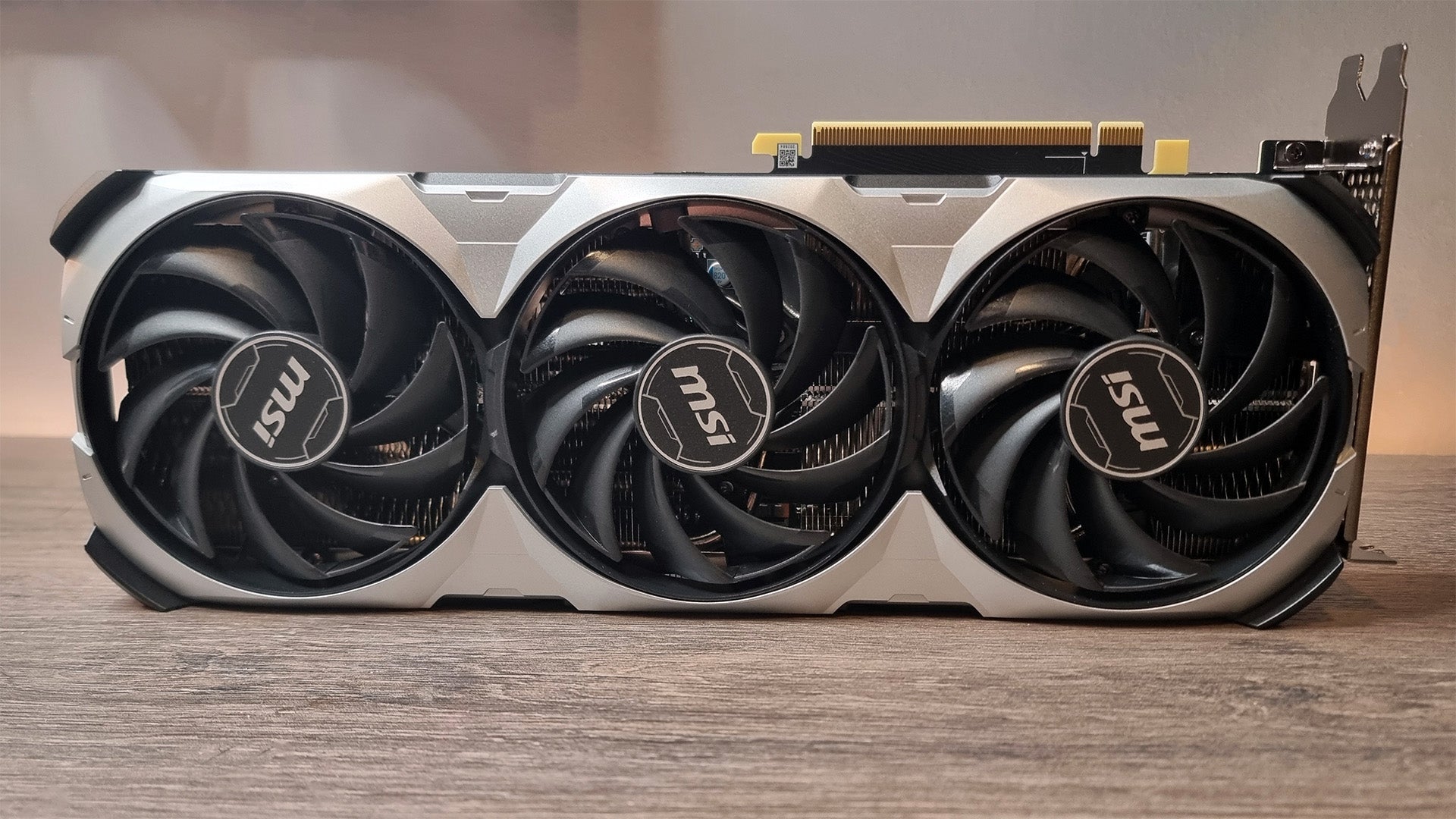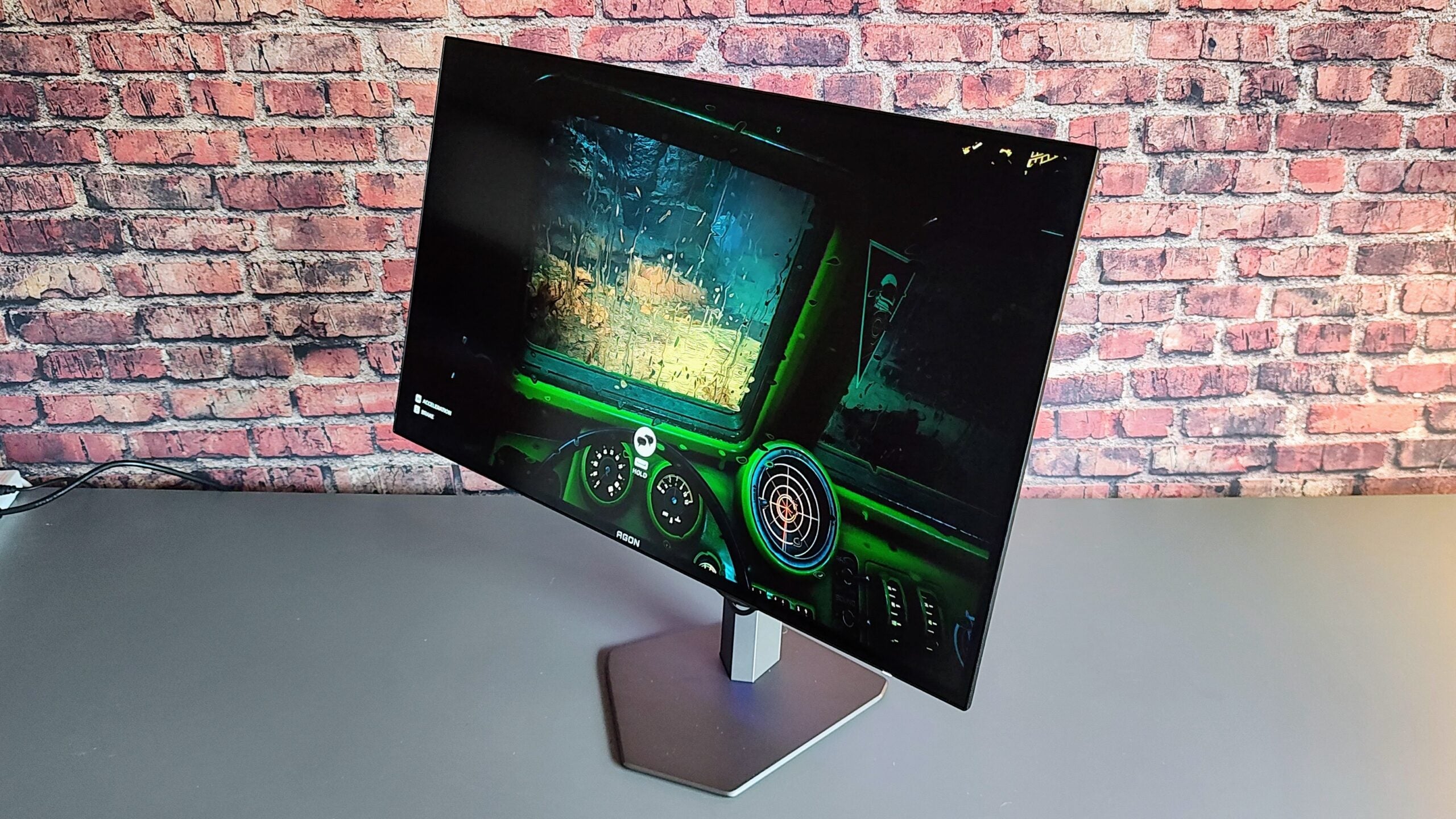Nvidia GeForce RTX 4070 Review
An entry-level graphics card for 4K gaming






Verdict
The Nvidia GeForce RTX 4070 hits the sweet spot in the latest generation of graphics cards, capable of a fantastic Quad HD performance and entry-level 4K without breaking the bank. But, for games lacking DLSS 3 support, there’s not enough of a performance boost for 30 Series owners to justify an upgrade.
Pros
- Decent 4K performance
- Excels at a 1440p resolution
- DLSS 3 provides massive boost
- Impressive power efficiency
Cons
- Not a huge upgrade on Nvidia’s 30 Series
- Limited game support for DLSS 3
Key Features
- Entry-level 4K performanceOne of the most affordable cards capable of 4K in the latest generation.
- DLSS 3 supportHuge AI performance boost for supported games.
- 3rd Generation Ray Tracing CoresImproved effiency for ray tracing, reducing the performance drop when activating the advanced lighting effects.
Introduction
The Nvidia RTX 4070 is almost bang in the middle of the RTX 40 Series range, capable of an entry-level 4K performance without the threat of emptying your bank account.
With retail prices starting at £569/$599 this graphics card can hardly be considered cheap, but it’s still far more affordable than the RTX 4080 that spirals past the £1000/$1000 mark.
You could then argue that the RTX 4070 is the best value option for those who want a Quad HD or 4K gaming performance, although the RTX 4060 Ti (£479/£499) is also capable of such a feat at an even more affordable price.
I’ve spent the past few weeks testing the Gigabyte GeForce RTX 4070 graphics card to determine whether it’s worth a buy. Here’s my verdict.
Specs and design
- Based on latest Ada Lovelace architecture
- Same CUDA Core count as the RTX 3070
- Support for HDMI 2.1
The Nvidia RTX 4070 uses the latest GeForce architecture as of 2023. This is called Ada Lovelace, and is built on a 5nm process node. For comparison, the older RTX 3070 GPU uses a larger 8nm process node which isn’t quite as efficient
That smaller process node results in a 2.7x boost in the number of transistors, ensuring a welcome boost to raw performance. But calling that the biggest upgrade would be a disservice.
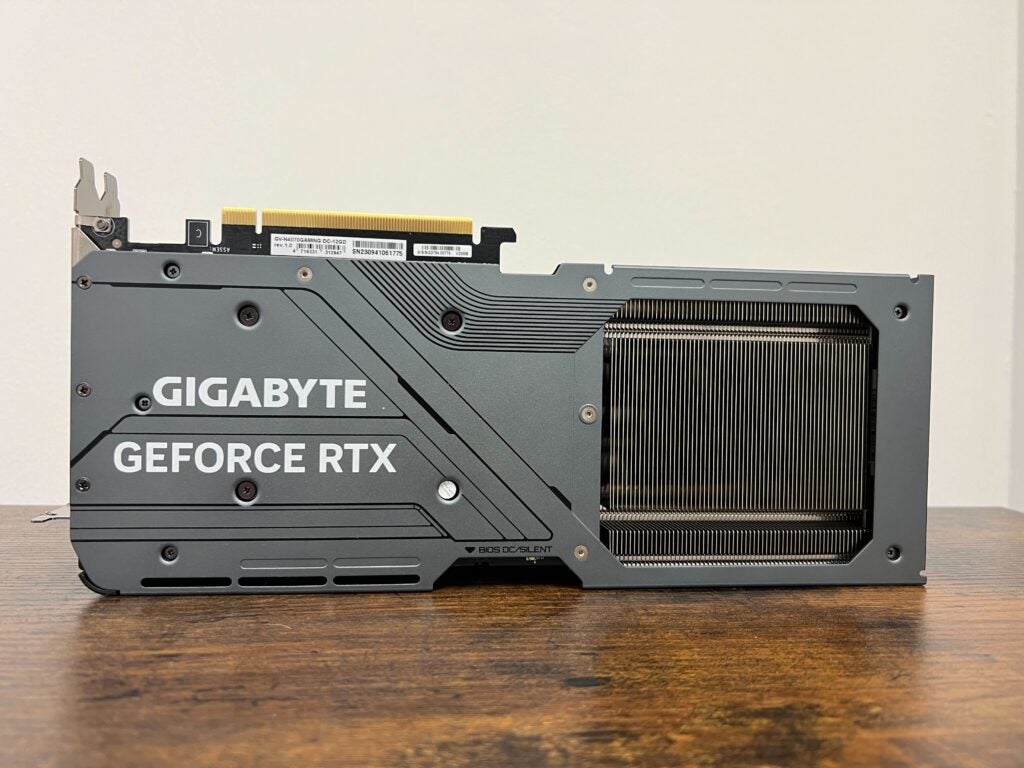
Ada Lovelace also sees the addition of 4th-generation Tensor Cores, which turbocharges the AI performance. This is incredibly important to unlock the powers of DLSS 3, which can push up the frame rate of a game by using AI smarts. If a game is supported, this means the RTX 4070 is capable of a high 4K performance even if it lacks the firepower to do so with more traditional methods of rendering.
New 3rd-Gen Ray Tracing Cores have also been thrown into the mix for the RTX 4070, making ray tracing even more efficient than before. That means (with supported games) you can activate advanced lighting effects without seeing a detrimental drop in performance.
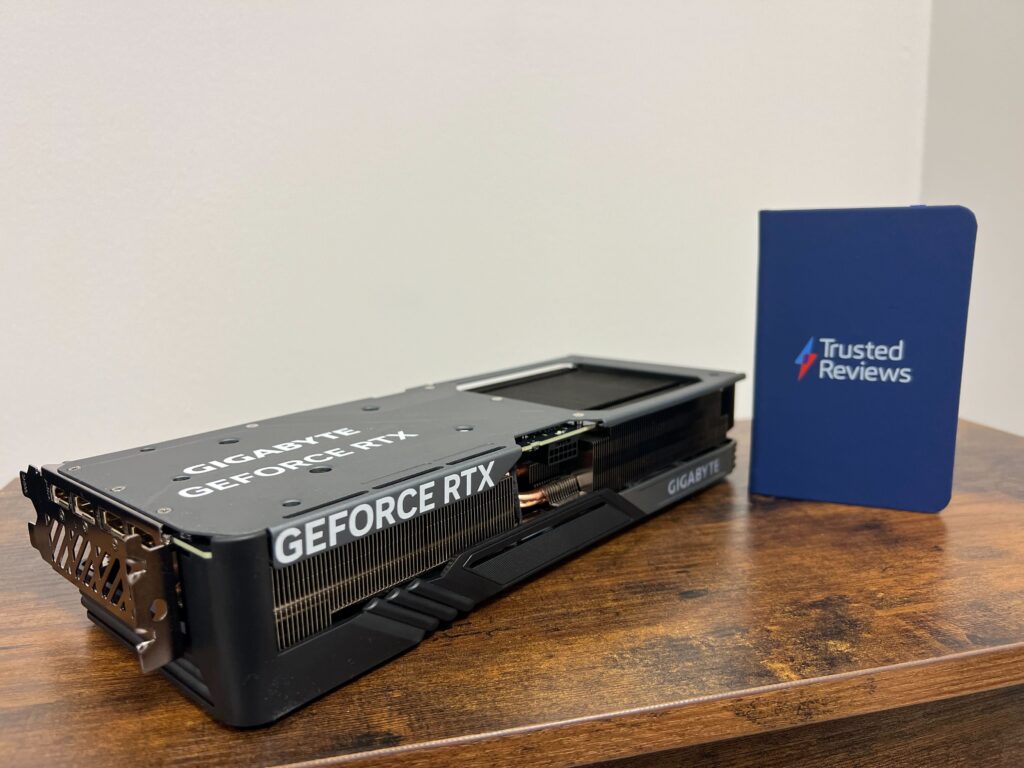
So those are all of the key upgrades that the Ada Lovelace microarchitecture provides, but has Nvidia made further improvements to the RTX 4070 compared to the RTX 3070? The answer is a mixed bag.
Nvidia hasn’t upped the CUDA Core count (which remains at 5888) but has upgraded the video memory from 8GB GDDR6 to 12GB GDDR6X. The boosted clock speed has also seen a speed bump from 1.73GHz to 2.48GHz, but that’s likely due to the new microarchitecture. In terms of specs, there aren’t a huge number of upgrades compared to the RTX 3070.
Specification compared
The Nvidia RTX 4070 is available as a Founders Edition card, but can also be bought in a variety of forms from various third-party manufacturers. I called in both the Gigabyte GeForce RTX 4070 Gaming OC edition and the PNY GeForce RTX 4070 12GB VERTO Dual Fan – the former has a triple-fan design, while the latter is restricted to just two instead if you want to shave down the cost.
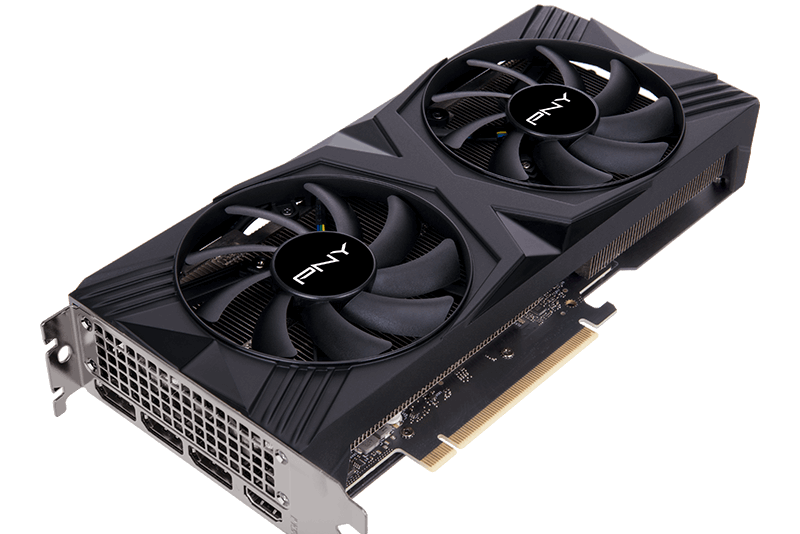
The Gigabyte model pictured here has RGB lighting in the fans, giving it a snazzier look when running inside your PC.
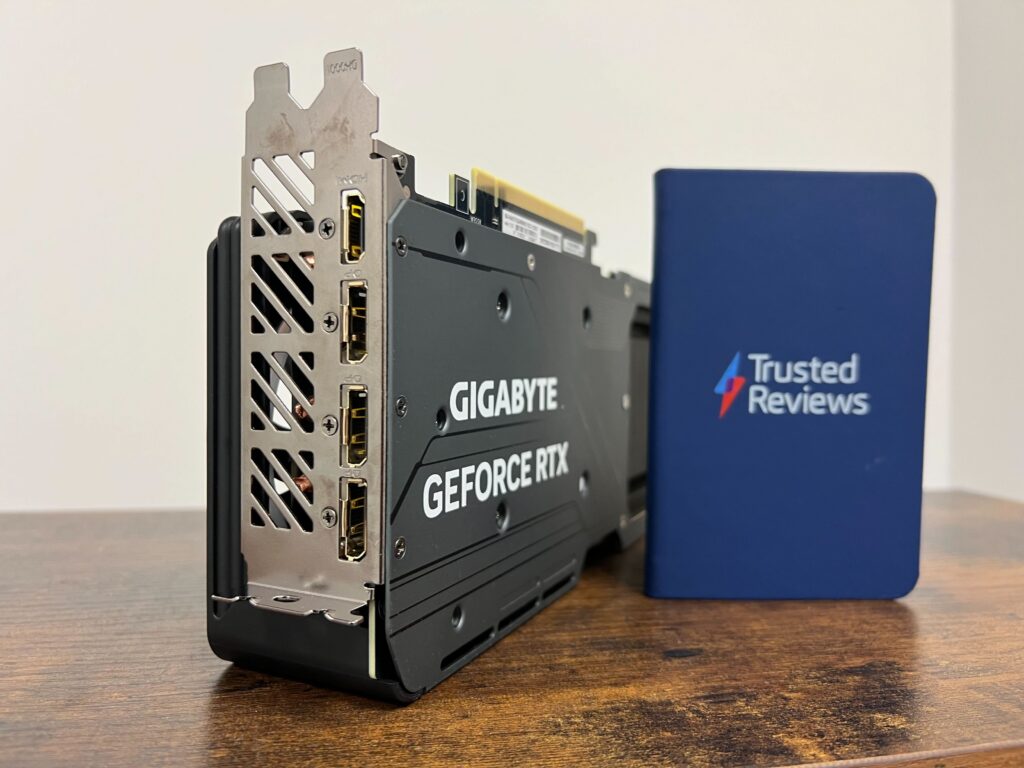
Switching focus to ports, the Nvidia RTX 4070 features HDMI 2.1 (allowing up to 240Hz at 4K and 60Hz at 8K) and DisplayPort 1.4. AMD steals an advantage in this area, now supporting the faster DisplayPort 2.1 standard.
Features
- DLSS 3 offers huge performance boost for supported games
- Excellent efficiency for ray tracing
There’s been a common theme for all of the RTX 4000 graphics cards, from the entry-level RTX 4060 up to the RTX 4090, and that’s a massive improvement to DLSS.
For those unaware, DLSS is an AI-powered feature that inserts additional pixels when rendering a game to reduce the workload of the GPU and therefore boost the frame rate performance. The RTX 4000 series goes one step further by unlocking support for DLSS 3 which can artificially generate entire frames rather than just pixels. As you’d expect, this results in an even greater performance boost.
This is illustrated in the graph above. The RTX 3080 Ti boasts a better raw performance when running Cyberpunk 2077 in 4K with ray tracing activated, but the RTX 4070 proves to be far more efficient as soon as you switch on DLSS.
And, while AMD has its take on DLSS called FSR, it’s nowhere near as efficient. As you can see, the RTX 4070 benefits from a greater AI-powered boost than what the Radeon RX 7900 XTX does with FSR.
The caveat here is that a game needs to support DLSS 3 for it to reach its full potential. Nvidia has an impressive list of game support so far, with the likes of Cyberpunk 2077, Hogwarts Legacy and The Witcher 3: Wild Hunt all included, but the vast majority of titles (especially older ones) are missing.
Ray tracing is the second big feature of the Nvidia RTX 4000 cards, providing realistic and dynamic lighting effects to make games look even more photorealistic. While rival AMD cards also support ray tracing, our tests show those GPUs aren’t quite as efficient with such taxing workloads.
When activating ray racing (with a 4K resolution) for Cyberpunk 2077 on the AMD Radeon RX 7900 XTX, the frame rate dropped from 56fps to 20fps – that’s a huge 36fps drop. As for the RTX 4070, it saw the performance fall from 32fps to 16fps, which resulted in just a 16fps hit. This is all without bringing DLSS 3.5 into the mix too, which not only boosts ray tracing performance further but also enhances the visual quality.
Performance and benchmarks
- Hit above 70fps for every game on test in Quad HD
- Capable of an entry-level 4K gaming performance
- Not a huge performance jump on last generation
The improvements to ray tracing and DLSS are undoubtedly impressive but, since such features are heavily reliant on game support, the raw performance of the GPU is arguably still the most important factor of a graphics card.
With that in mind, I’ve tested the Nvidia RTX 4070 with both industry-standard and in-game benchmarks. I’ve also included multiple other graphics cards so you can compare the data and determine which represents the best value.
Of course, to ensure a fair test I’ve used the same PC build for every graphics card. You can check out the exact specifications of our build below:
- Motherboard: Gigabyte Technology X670E AORUS Master
- CPU: AMD Ryzen 5 5600X
- SSD: PNY CS3140 1TB
- PSU: Corsair HX 850
- Cooler: Corsair Hydro Series H150i PRO RGB 360mm liquid cooler
- OS: Windows 11
First up, I put the Nvidia RTX 4070 through its paces with a few synthetic benchmark tests. Such software has been specifically designed to test graphics performance, providing a numbered score that can then be used to compare with other GPUs.
For the 3DMark Time Spy Extreme, which measures graphics performance in a gaming context, the Nvidia RTX 4070 predictably sat right between the RTX 4070 Ti and RTX 4060 Ti. It also boasted a better performance than the last-gen RTX 3070 Ti and wasn’t too far away from the RTX 3080 Ti.
I also used Blender’s built-in benchmark software to evaluate the performance for more creative workloads. For this test, the RTX 4070 blasted past the RTX 3070 Ti, and even surpassed the RTX 3080 Ti.
I also made sure to use the in-game benchmark tool of several games to see how the RTX 4070 stacks up when it comes to gaming. I tested each game at 4K, Quad HD and Full HD, while using the highest preset graphics settings in every instance.
The Nvidia RTX 4070 excelled at Quad HD gaming in particular, achieving beyond 70fps in every single game (including the intensive Cyberpunk 2077) and even surpassing the 100fps mark for the likes of Borderlands 3 and Rainbow Six Extraction.
4K performance was impressive for a graphics card at this price, although a 32fps score for Cyberpunk 2077 and 38fps for Total War: Warhammer 3 show that it can dip fairly low for the most intensive modern games. This doesn’t leave enough headroom to have both a 4K resolution and ray tracing activated without leaning on DLSS for support.
Those results look great in isolation, but I started to get concerned when comparing them to the previous generation’s graphics cards. The RTX 3080 Ti consistently posted superior gaming results, while even the RTX 3070 Ti bragged better figures for the vast majority of games on test. While disappointing, this can’t come as a huge surprise since the older graphic card boasts a greater quantity of CUDA Cores – although it does diminish the appeal of upgrading to the RTX 4070 if you already own a 30 Series graphics card.
Power consumption
- Impressive power efficiency
- Lower peak power draw than the RTX 3070 Ti
If you forget to check the power consumption of a graphics card, you may end up in an annoying predicament that your PSU isn’t able to power it. Nvidia recommends at least a 650W system power, with the card registering a 200W total graphics power.
To put those figures to the test, I equipped the test rig with a power meter and judged the difference in power consumption when swapping the RTX 4070 out with competing cards.
| Idle Power Draw | Peak Power Draw | |
| Nvidia RTX 4070 | 81.6W | 366.8W |
| Nvidia RTX 4070 Ti | 82.3W | 452.7W |
| Nvidia RTX 4060 Ti | 69.2W | 306.5W |
| Nvidia RTX 3070 Ti | 75W | 452W |
| AMD Radeon RX 7900 XT | 77.4W | 481W |
The idle power draw came in at 81.6W, which is roughly the same result as the RTX 4070 Ti and marginally more so than the Radeon RX 7900 XT despite the AMD card offering a greater performance.
The Nvidia RTX 4070 proved to be more impressive when it came to peak power draw (while running the 3DMark benchmark) though, with a result of 366.8W undercutting the draw of even the last-gen RTX 3070 Ti. If you’re concerned about power consumption when deciding on a graphics card, you can be rest assured that the RTX 4070 is highly efficient for the performance it delivers.
Latest deals
Should you buy it?
You want 4K performance without spending a fortune
The Nvidia GeForce RTX 4070 is one of the more affordable cards to be capable of 4K gaming, while still offering the benefits of ray tracing and DLSS 3.
You own an Nvidia RTX 30 Series graphics card
In terms of raw graphics performance, the Nvidia GeForce RTX 4070 doesn’t offer a huge performance boost over the previous generation. If you own an RTX 30 Series card, you’re better off waiting until the following generation.
Final Thoughts
The Nvidia GeForce RTX 4070 is one of the most affordable new-gen graphics cards that’s capable of an entry-level 4K performance with ray tracing activated, while also excelling when set to a Quad HD resolution.
The headline features are of course ray tracing and DLSS, with the latter especially being a huge advantage when compared to AMD’s cards. Limited game support does somewhat dilute the impressive powers of DLSS 3 though.
I am a little disappointed to see minimal performance gains compared to the Nvidia RTX 3070 Ti, making it difficult for me to recommend an upgrade if you already own a 30-Series card. But if you’re still stuck on an older generation or want to build a PC from scratch, then the Nvidia RTX 4070 remains an excellent option at a reasonable price. Check out our Best Graphics Card guide for even more options.
How we test
Every graphics card we review is run through a series of synthetic and real-world benchmarks to gauge its performance, power efficiency and potential for overclocking.
Tested with in-game benchmarks
Compared against other cards we’ve tested
Power consumption checked
FAQs
Yes, the Nvidia RTX 4070 is great for gaming, excelling particularly at 1440p gaming, while also being capable of a 4K performance.
Yes, the RTX 4070 is more powerful than the RTX 3070 and is more efficient at DLSS and ray tracing. Whether the performance increase is substantial enough to justify an upgrade is debatable though.




